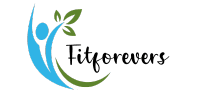Bhujangasana (Cobra Pose) 2025 Guide: Benefits, Techniques & Spinal Health Tips
Introduction
Yoga continues to dominate the global wellness scene in 2025, with spinal health, posture correction, and stress relief ranking high in search trends. Among the most powerful asanas for these goals is Bhujangasana (Cobra Pose). Known for unlocking spinal flexibility and strengthening the back, it is more relevant today than ever before—especially for people struggling with back pain, tech-neck, and poor posture caused by modern lifestyles.
This guide will cover step-by-step instructions, benefits, mistakes to avoid, FAQs, and how to enhance recovery naturally.
What is Bhujangasana (Cobra Pose)?
Bhujangasana, derived from the Sanskrit word Bhujanga (meaning serpent), resembles the raised hood of a cobra snake. This gentle yet powerful backbend strengthens the spine, stretches the chest, and energizes the body.
Step-by-Step Guide to Bhujangasana
-
Starting Position – Lie on your stomach with legs extended, tops of feet pressing the mat, and palms under shoulders.
-
Engage the Core – Keep thighs active, pelvis grounded, and belly slightly drawn in.
-
Lift Chest Slowly – Inhale and lift the chest using your back muscles (not just arms). Keep elbows tucked close.
-
Open the Chest – Pull shoulders back and down. Gaze forward or slightly upward without straining the neck.
-
Hold the Pose – Stay for 15–30 seconds with deep breathing.
-
Release – Exhale slowly and lower back down. Rest in Child’s Pose.
👉 Pro Tip: Always focus on lengthening the spine, not forcing height.
Health Benefits of Bhujangasana
-
✅ Improves spinal flexibility & mobility
-
✅ Strengthens back and core muscles
-
✅ Corrects posture (great for tech-neck & rounded shoulders)
-
✅ Reduces stress and anxiety
-
✅ Relieves lower back stiffness & fatigue
-
✅ Enhances lung capacity and breathing control
Common Mistakes to Avoid
❌ Overarching lower back (causing strain)
❌ Using only arms to lift instead of engaging spine muscles
❌ Shrugging shoulders toward ears
❌ Looking too far upward (neck compression)
❌ Holding breath instead of deep, controlled breathing
Variations of Cobra Pose
-
Baby Cobra (Beginner-Friendly) – Keep forearms down, lift chest slightly.
-
Full Cobra (Intermediate) – Straighten arms fully, deeper backbend.
-
Advanced Upward Cobra (Urdhva Mukha Svanasana) – Requires stronger back and flexibility.
Recovery & Nutrition Tips (2025 Wellness Trend)
To maximize spinal health and faster recovery, pair Bhujangasana with:
-
🥦 Anti-inflammatory foods (leafy greens, turmeric, ginger)
-
💧 Hydration to prevent joint stiffness
-
💪 Nitric Oxide Supplements for better circulation & recovery
👉 Recommended: Superhuman-AT-70 Nitric Oxide Supplement – supports blood flow, muscle recovery, and energy levels after yoga sessions.
Safety & Contraindications
Avoid or modify if you have:
-
Recent back injury or herniated disc
-
Severe spinal arthritis or fracture
-
Pregnancy (use gentle variation only with doctor’s advice)
FAQs – Bhujangasana in 2025
Q1. How often should I practice Bhujangasana?
➡️ Ideally 3–4 times a week. Beginners can start with 2–3 rounds and gradually increase.
Q2. Can Bhujangasana cure back pain?
➡️ It helps relieve mild stiffness and strengthens spinal muscles, but chronic pain should be checked by a doctor.
Q3. Is Cobra Pose safe for beginners?
➡️ Yes, if started with the Baby Cobra variation and done under guidance.
Q4. How long should I hold the pose?
➡️ Hold for 15–30 seconds initially; advanced practitioners may extend to 1 minute.
Q5. Does Bhujangasana help with weight loss?
➡️ Indirectly, yes—it boosts metabolism, strengthens the core, and improves overall posture, making workouts more effective.
Q6. Can I combine Bhujangasana with gym workouts?
➡️ Absolutely. It’s a great warm-up or cool-down exercise for strength training and cardio.
Q7. What’s the difference between Cobra Pose and Upward Dog?
➡️ In Cobra, pelvis stays grounded; in Upward Dog, pelvis and thighs lift off the mat.
Conclusion
Bhujangasana (Cobra Pose) is more than a yoga asana—it’s a 2025 wellness essential for posture, spinal health, and stress relief. By practicing regularly, following correct form, and supporting your body with proper nutrition and supplements, you can unlock a stronger, more flexible spine and a calmer mind.
🔗 For more yoga, fitness, and health tips, visit FitForevers.com

